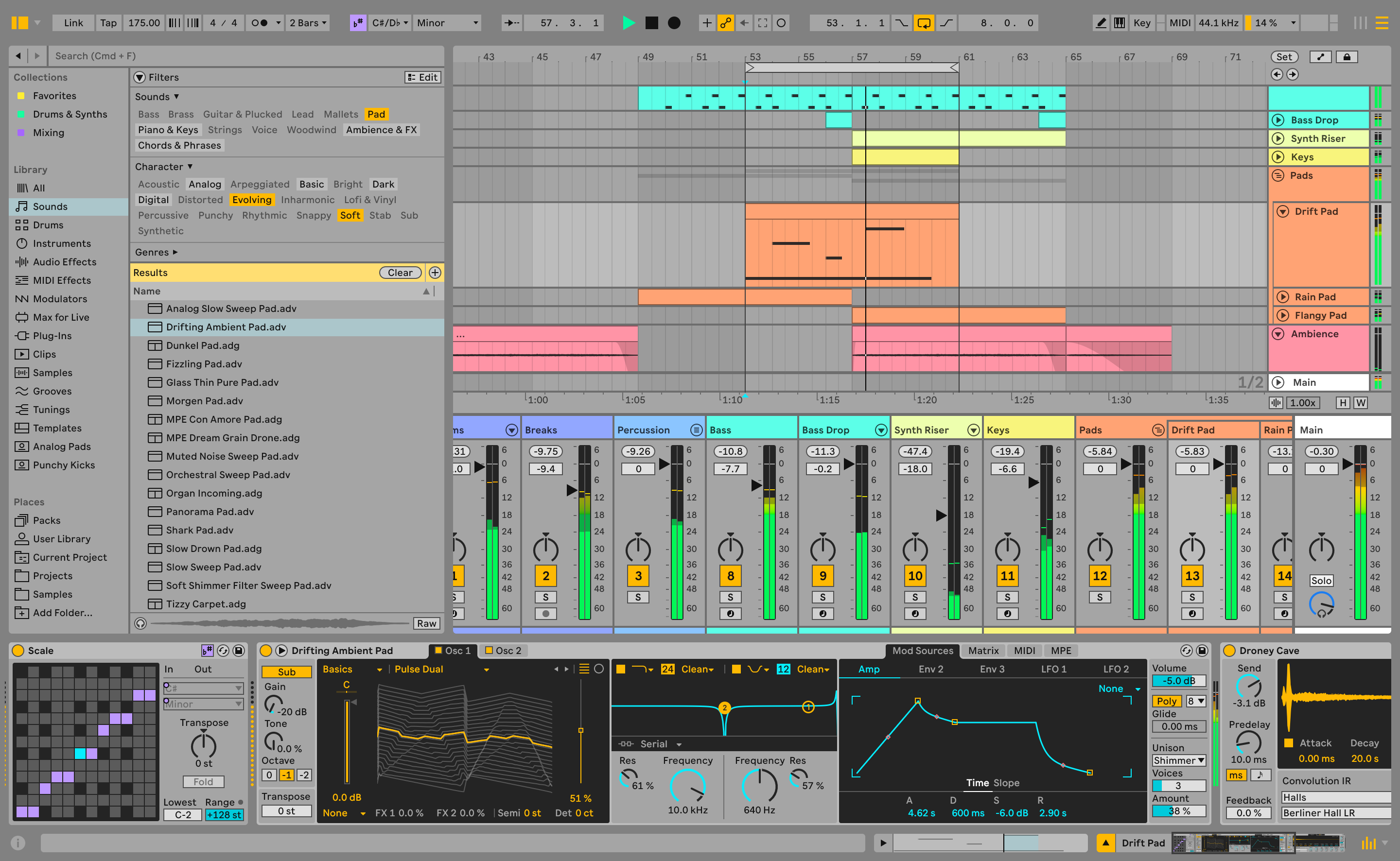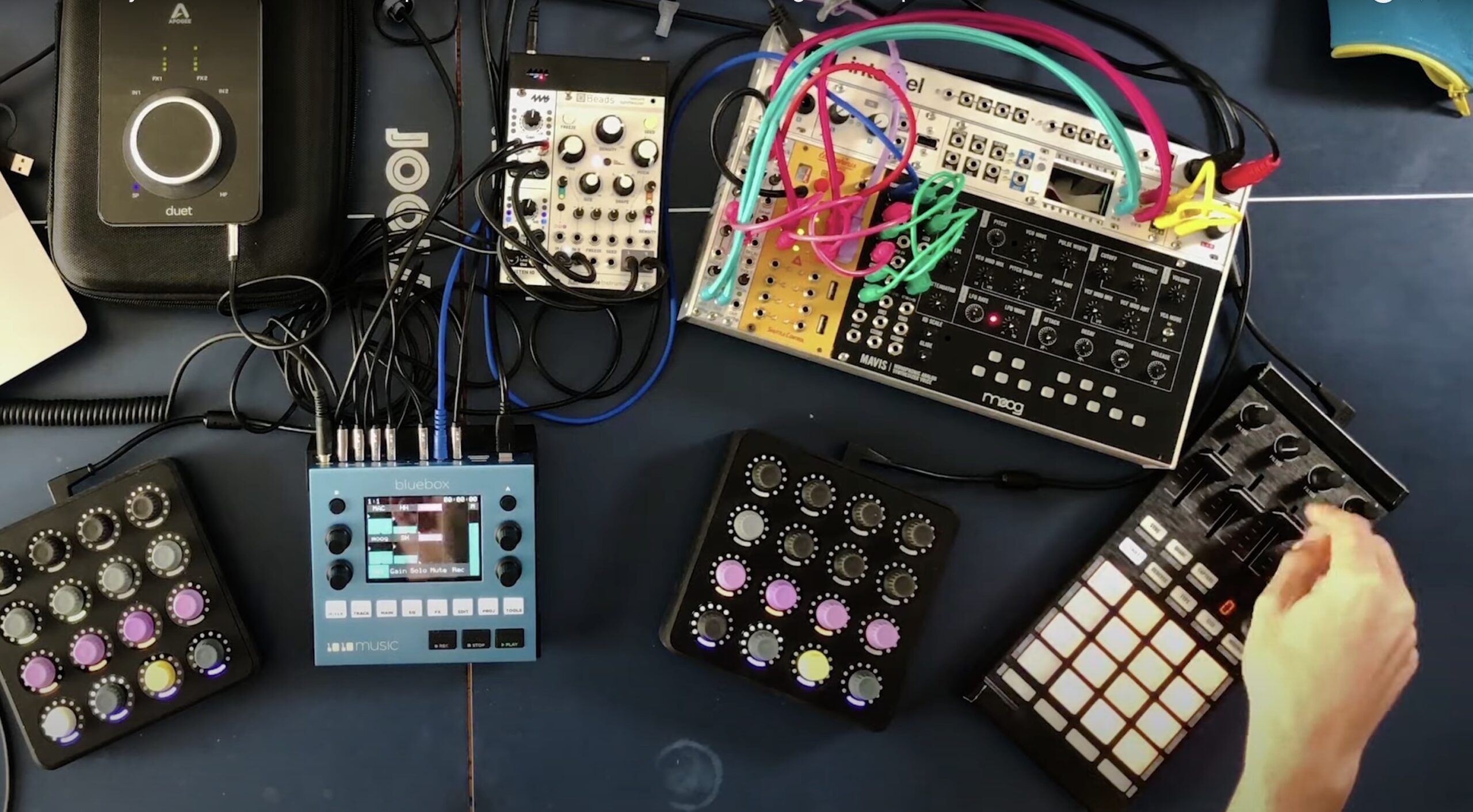Much like the impetus for Native Instruments to create Maschine and for Ableton to develop Push, Zurich-based artist Ander (just Ander) also wants electronic music to get out from behind the laptop. “I don’t want to read anything during my live set,” he said in a video on Ableton’s blog. “I just want to look at what’s happening.” To do so, the German-born tinkerer and composer made Station, a grid-based, LED-and-knob-driven, multi-unit controller that he runs with Ableton Live and Max for Live for maximum improvisational possibilities. We spoke with him about the unique layout and design of the Station, and how it allows him to endlessly pivot his performances.
DJ TechTools: Where did you get the idea for your unique controller?
Ander: Coming from jazz, I wanted to create an instrument for electronic music—an instrument in the true meaning of the word—a tool for live improvisation and for playing and combining sound spontaneously. [I wanted] direct access to all of my sounds and synths, all of the time, with direct and easy feedback, which would allow me to play intuitively and spontaneously. Who wants to read a display when playing an instrument? That’s why all the feedback here happens via colors. Also, I wanted to have deep control of my sounds, more than just playing with filter and resonance. The rest was three years’ worth of nights building, and [relying on] very supportive friends.
How do you produce a new track or live set?
I focus on playing live. That is what I like most. New tracks are developed out of my live performances. I record each and every show that I do in Ableton, and when I am absolutely happy with a certain part, I edit the material in the arrangement view and make a track out of it.
How do you plan your live sets?
I don’t. Really, it is all about flow and improvisation. My set has a rough plot to it: I can choose from different sets of sounds which have different moods, but apart from that, I start with firing the first clip and then I listen to what is happening. In every set I play, I hear grooves and sounds that I have never heard before. This is what keeps me playing. There is so much to discover, and the possibilities are endless—like with a real instrument. It just doesn’t get boring. And the groove leads the way.
What software are you controlling?
Ableton Live, with some custom Max for Live patches and lots of tracks. My set has about 300 tracks, 95 % of which are MIDI tracks; I barely use audio tracks at all. This gives me much more freedom in controlling and forming the sound.
What’s the basic layout of each of your controllers?
Each controller is different and serves a different purpose. The square one is for extra loops and fills, and for special FX sounds. On the lower row I have my master effects on pressure-sensitive pads. Since I can use eight of them at the same time, they can be used very creatively and played like a piano keyboard. The smallest controller contains all the controls for my looping engine: I can play and record any instrument I use live with velocity-sensitive keys and also loop and overdub the sound that I produce. This is very important to give a live feeling to the music, and is also a very flexible tool when playing together with other live artists. The biggest controller contains the main sounds. Essentially, it is the Ableton Live Session View realized in a physical controller. I can control sounds, mix them, change them, put FX on them, and improvise on a clip matrix—plus some custom-made extras and goodies.
What’s the hardware behind the controllers?
I planned, designed, and built the controllers myself, including the circuit design, circuit board layout, mechanical design, interaction design, etc. The circuits and the firmware are based on the excellent Midibox platform http://ucapps.de. I used the platform and extended it with custom modules (for example, an RGB LED driver). Also, I ported the whole circuit design to surface-mounted devices, in order to be able to realize such a tightly packed layout.
What type of feedback do you get from the controller’s lights?
I use color and brightness to communicate the status of the parameters that I am controlling. The color tells me whether a button is active or not, or which page of the live set I am currently on. The brightness acts a feedback for the encoder values. It also gives me a clue as to whether I have played a clip already. Blinking buttons remind me of important master settings, like solo and mute.
Where will your music and your controller take you in the years to come?
I am still learning a lot each time I play. And I am still developing and fine-tuning many features. The good thing about building your own hardware is that you can change it! Whenever I think during a live set, “I would love to have a button that does this and that,” I just sit down at home and code it. There are still some unused buttons on this thing.









